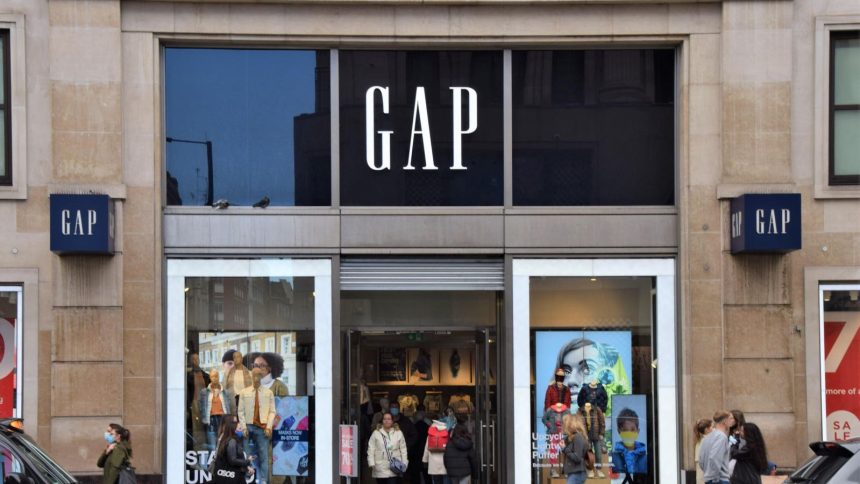Like many others among its retail apparel brethren, The Gap was once (in the 1990s) an international megastar—home of the hoodie. Its fashion brands graced red carpets and magazine covers, capturing the hip tech-centric culture of a generation.
Since then, as a business, the company has had a few peaks and valleys, but its allure had faded as its base aged out.
So, Wall Street was stunned recently when the company announced its first quarter results. Comparable store sales averaged across its four brands (Gap, Old Navy, Banana Republic, and Athleta) were up 3 percent year-over-year, including a 5 percent surge in online sales.
Margins were also significantly higher and it reported a healthy $1.7 billion in cash and equivalents—ammunition for growth.
Gap’s most recent debt-to-equity ratio logged a healthy year-long decline to 0.55, well within the safety zone. The stock surged 30 percent on the news.
So, what’s new?
A better question might be, Who’s new as well as what’s new? Last July, Gap hired a new CEO, Richard Dickson, a veteran of Mattel who is credited with leading the revitalization of the Barbie franchise.
According to a Fast Company report earlier this year, “Dickson is clearly skilled as a brand-builder, but his expertise thus far hasn’t been in the fashion industry. It was crucial for him to have a creative director with a track record of success in the fashion world.”
That creative director, Zac Posen, was hired in February. Posen’s career has been steeped in fashion, ever since he graduated from the prestigious Parsons School of Design. He was Brooks Brothers’ creative director for six years and is an established and recognized designer of celebrity red carpet gowns.
Based on the company’s most recent quarterly results, the match would seem to be working. In earnings calls, the 43-year-old Dickson has been talking up Gap as a pop culture brand, citing the dramatic Posen-designed gown worn at the most recent Met Gala by actor Da’Vine Joy Randolph, and a “shirtdress” worn by Anne Hathaway.
He told analysts, “Cultural relevance and marketing are starting to show up in metrics that matter like buzz, consideration, and brand relevance.”
As we noted here recently, a similar transformation is taking place at Levi’s, which is in the process of reintroducing itself as a “denim lifestyle brand.” Express Inc. has come out of bankruptcy in the hands of a retail marketing maven.
Abercrombie & Fitch CEO Fran Horowitz-Bonadies explained that the company’s recent rebound to Wall Street darling was the result of “almost a 180-degree turn on making sure we keep the customer at the center of everything we do.”
Read the full article here
















